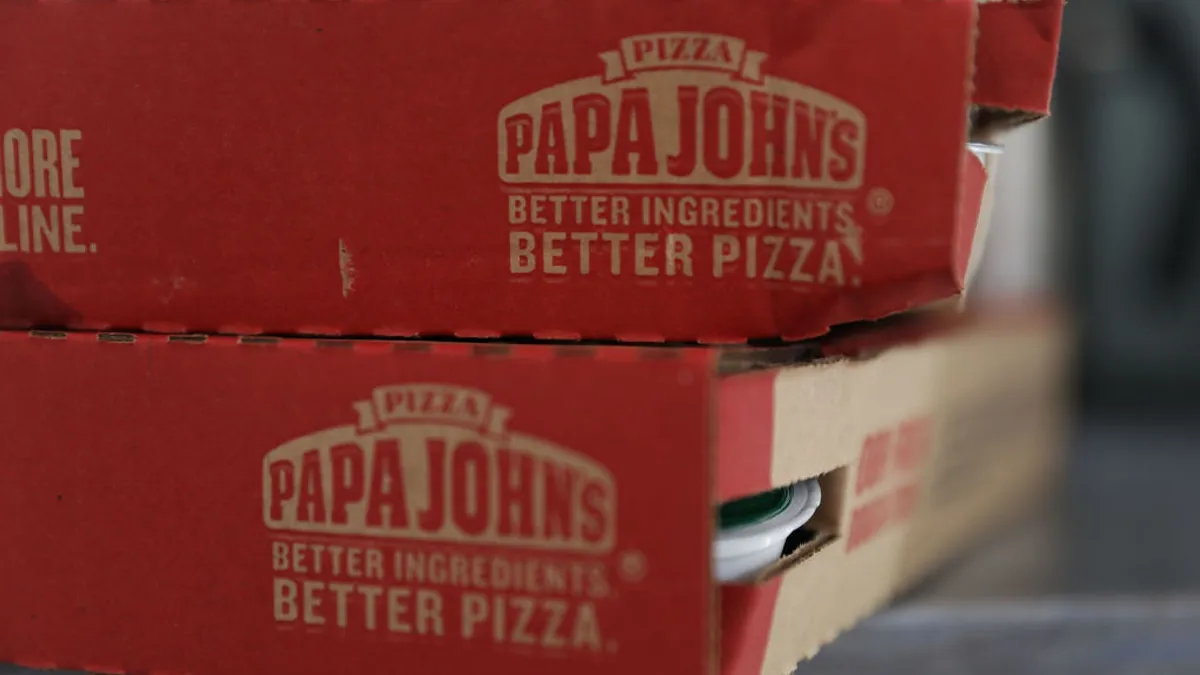Shortages of delivery drivers, which have been worsening since 2021, are taking a toll on top pizza chains. Pizza Hut and Domino’s both posted negative same-store sales during the first quarter, attributing these financial dips to prolonged labor pressure.
But despite these challenges, one pizza restaurant continues to grow: Papa Johns reported a 1.9% increase in North American same-store sales during Q1. How? In part, because the chain has been working with third-party delivery aggregators for the past three years to support stores during peak hours. This move initially aimed to mitigate sky-high driver turnover, which reached 220% in 2019, but now it appears to be a farther-reaching strategy.
“Staffing is always a challenge in our industry and continues to be so. In addition to our integrations with the aggregator marketplaces, our nationwide integrations with deliver[y] service providers have been a key tool allowing us to continue to serve our customers during peak times,” Papa Johns CEO Rob Lynch said during the company’s Q1 2022 earnings call. “Though these delivery-as-a-service transactions are a slightly lower margin versus using our own drivers, they are incremental, profitable orders that otherwise may have gone unfulfilled.”
Papa Johns' premium pricing has also helped alleviate some staffing issues since the company needs fewer transactions compared to more value-centric competitors, Lynch said.
The chain has also been using a third-party call center since 2020 to take orders instead of requiring individual stores to field phone calls, freeing up employees to complete other tasks. A little over half of Papa Johns' domestic stores, or roughly 1,600 in North America, are using the Papa Call phone service, and more are expected to sign up, Lynch said. Domino’s also plans to deploy its call center to up to 3,000 stores by mid-May.
“We continue to invest in tools to increase productivity in our restaurants,” Lynch said. “And as labor becomes more expensive, those tools become more valuable.”
The benefits of aggregator partnerships
Some Papa Johns operators say third-party delivery partnerships account for 6% to 7% of sales while others say it represents about 15% to 16% of sales, BTIG said in a May 2 report emailed to Restaurant Dive.
Franchisees' relationships with delivery firms have improved over time, Lynch said.
“We've learned a lot about how to work most effectively and productively with these aggregators. It's not a perfect relationship. There were some bumps along the way that we had to work collaboratively with them to iron out, to get to an operating model in the customer service level that allows us to continue to leverage it at the scale that we do,” Lynch said.
Despite apprehension among some operators, increased partnerships could help improve Papa Johns' supply of drivers.
“We continue to be bullish on these growing partnerships as we execute on additional opportunities to reach new customer segments,” Lynch said.
Papa Johns began its foray into delivery partnerships with a relationship with DoorDash in 2019, and added Uber Eats and Postmates later that year. Moving away from exclusivity with DoorDash to partner with additional providers may also allow for increased competition that could alleviate jumps in commission rates, which franchisees have expressed concerns about, BTIG said in a May 5 Papa Johns report emailed to Restaurant Dive. Multiple delivery deals ensure Papa Johns isn't beholden to the pricing of just one company, and it could use relationships with different delivery providers to negotiate costs down.
“We expect Papa John's to continue to focus on ways to increase driver pay, to lower turnover, driving sales through its own higher-margin channel,” BTIG said.










